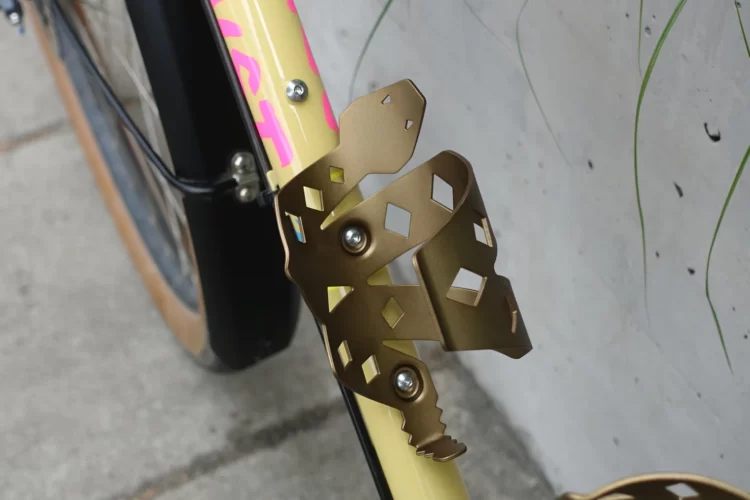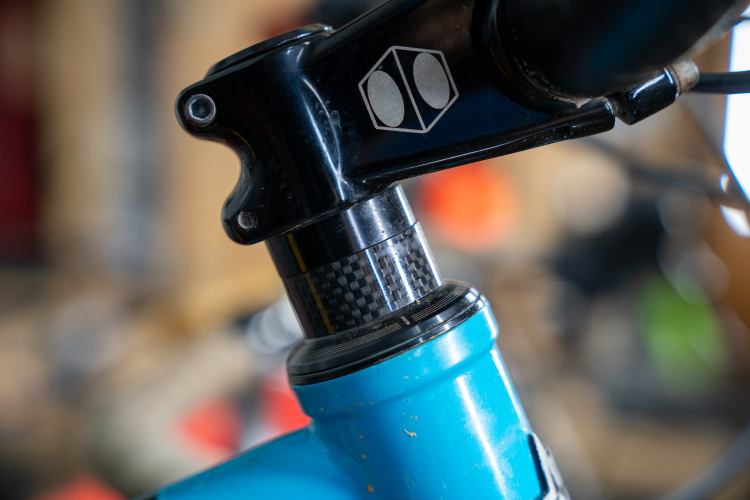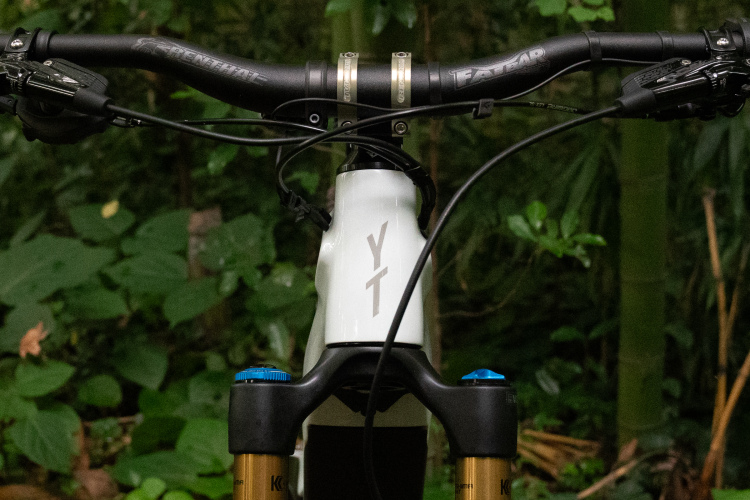
Ben Jones is the Co-Owner of Deviate Cycles, an independent Scottish mountain bike brand specializing in high-end designs and builds since 2016. The following op-ed was originally included in an October 31, 2024 email newsletter sent to Deviate Cycles customers.
It has been an incredibly tough couple of years for the bike industry as a whole and for Deviate by extension. The market is heavily discounted and the reality is, when you take 30%, 40% or even 50% off a bike, there simply is nothing in it for anyone.
The blame for this situation squarely falls in the hands of the biggest brands who projected Covid-level demand forward into these years — a demand that was exaggerated by under supply due to factory closures. Although there is some blame on the factories themselves who told these brands that if they didn’t place big orders they would be at the back of a very long queue. It really was a vicious circle — but entirely predictable in hindsight. Every business in the industry is now suffering the consequences of these actions today and there are certain brands out there who held meaningful reputations as non-discount brands and are now selling stock at outrageous discounts and, in my view, will never regain that reputation.
The consumer is then caught in the middle. We all love a bargain — but the second-hand market has been completely crushed by these discounts, so selling on your bike after a couple of years is now largely pointless.
Ultimately, I firmly believe it is good for everyone — including consumers — if high-end brands exist to drive the sport forward with R&D and unique designs. Those brands, us included, cannot compete against the world’s biggest brands selling their wares below cost price. It’s hard enough to compete when these brands actually need to make a profit.
The reality is these discounts cannot continue forever and all of us at Deviate and across the industry are all hoping that things will settle down into 2025 and that’s where we have lots of exciting news.

Deviate is working on a new high-pivot, mixed-wheel electric bike, the Kurgan for 2025. Click here to learn more and place a deposit to secure one of the first bikes off the line.











18 Comments
Dec 6, 2024
As a consumer, bike prices do seem high, even the discounted ones in some cases. However, I appreciate the fact that Ben is someone who produces bikes and actually knows what they cost to produce and ship. I've heard this same perspective from others in the industry too; they simply don't have big margins to begin with. We tend to think about margins being pure profit, but for many bike brands, even in a good year, most if not all of the margin just goes to covering wages and overhead.
Dec 9, 2024
Bike prices ARE high. However, despite the ticket price, margins are not as high as I think consumers assume. Take clothing for example, a garment can cost $3 to make, $4 landed cost and easily retail for $30 + tax. Even with distribution and retail that want to make some money, there is a huge margin to play with. Half price just means making less money - not losing money. The bike industry often has a distro/retail model as well, but does not have the margins to play with. A distro needs 20-30% and a dealer is looking for 30-40%. When you take a $5000 ticket price even at the lowest end of those ranges that's $2800 for the manufacturer to pay their suppliers, pay for all the shipping and duty, pay for warranty replacements, pay for marketing and run their business ideally with a little left over to invest in new products and R&D and provide working capital to buy in next years stock. It's very tight. This is why the direct model is so appealing to manufacturers as the distro and retail model really squeeze margins to the point whereby it becomes more of a volume game. That's not disputing the importance of great distro and great retailers to manufacturers and to customers, and clearly each of those businesses need to keep the lights on and make some money. A quick google search shows Shimano is on about a 40% gross and 10% net margin which doesn't seem outrageous - so I would suggest that there isn't price gouging in the market as is suggested elsewhere in the comments - it's just there are a lot of mouths to feed.
So with that in mind I think the pricing is high because of customer performance expectations. In terms of manufacturing, high end bicycle equipment is still low volume and there are criteria (in terms of weight, strength and performance) which require lots of R&D (when compared to the sales volumes) and high end, often labour intensive manufacturing techniques (all carbon bikes are hand laid). Therefore to make enough margin to run a viable business, prices have to be high. There are plenty of options at the lower end in terms of price (but still pretty decent performance for most riders) and it's entirely possible to pick up a few year old very high quality bike that you'll have lots of fun on for buttons. I rode 2nd hand bikes until I entered to industry as a guide when Yeti and then Pivot kindly supported me. While we are in the business of selling high end bikes to folk that can afford and justify them - I absolutely understand these high end products are out of reach for many customers. A Porsche is out of reach for me - that doesn't mean I don't dream of kicking about in a 911 one day. That's okay.
At Deviate we want to play in the high end of the market, where we are low volume, highly innovative and create the bikes we dream of riding. We support folk working in the industry with discounts including retail staff, guides etc (lets face it, it's not an industry that has high wages and cheaper bikes should rightly be a perk!). We do our best to offer fair MSRP pricing and ensure our retailers make a fair margin, we can pay our staff a fair wage and invest in the future of the brand.
Hope that sheds a little more light :)
Ben
Dec 6, 2024
Dec 6, 2024
Dec 6, 2024
Dec 6, 2024
But none of that explains why high end pedal bikes cost as much or significantly more than dirt and road motorcycles, whether you're talking about the whole package or individual parts.
Even consumables like brake pads and tires cost roughly the same for pedal-bikes vs motor-bikes, despite the latter being several times larger and therefore having far more raw material cost.
And I don't buy that it's all due to R&D or safety/regulatory compliance costs, because all of that applies every bit if not more so to motor-bikes as they do to pedal bikes.
Maybe it comes down to a duopoly for most components driving up those costs, and then way too many bike-makers in the next step down the supply chain making the market inefficient.
Dec 6, 2024
Dec 7, 2024
receive $230 in reward points at the end of the year. Too much of a difference for me to ignore.
Dec 6, 2024
Dec 7, 2024
Botique builds shifted to direct sales and a few niche chain stores like Microcenter. The low end of the market reached a point it was "good enough" for people to consider it a commodity and most local sales shifted to big box stores.
With Walmart pushing hard at selling bikes for $300-500 that rival the quality you can find in a bike shop for $500-800, the old standby of "sure it's cheap but that's just a bike shaped object" starts to fall flat.
The only differentiation left is experience in assembly and support - the latter of which people don't care about anywhere near as much if they can spend a few bucks on an extended warranty and just return the bike for a new one if something breaks.
If shops are going to survive, they may have to consider joining hands with bigger retailers. Lawn equipment companies might be a good model for that - if you buy a John Deere at Lowe's, for example, it's generally assembled by and gets repaired by a local company.
I have to imagine that Walmart would be thrilled to rid themselves of all the tool / labor costs of doing assembly in-house and be able to advertise that what they're selling is "just as good as a bike shop because it's assembled by a bike shop".
Dec 9, 2024
Lots of shops won't even touch mowers from the big box store anymore. Warranties are almost impossible to get paid, parts availability is a joke, and if it's a John Deere, good luck. Find a local dealer you like and buy from the place that can service it.
Dec 9, 2024
Dec 7, 2024
It seems to me that Ben is claiming that even if smaller brands, like Deviate, did not overorder, they are now being forced to discount their prices to compete with the big brands, who have dramatically slashed their prices because they DID overorder. That's a pretty fascinating assertion, and it's worth asking: is that really true?
However, he doesn't quite come out and say that explicitly.
Dec 7, 2024
The original newsletter was a little more developed and can be viewed here: https://mailchi.mp/3f26a5acfbe5/deviate-cycles-claymore-newsletter-14051605
To give you some more context. We didn't overorder - partially because we were/are a small company and can't afford to preorder boat loads of stock. If we had the resources of a larger company I can't say for certain that we wouldn't have overordered, it was an easy mistake. In hindsight seeing my words in print, I am maybe a little harsh when assessing the decision making of the large manufacturers - it was a complex time and no-one had any idea what supply and demand was going to look like month by month. Everyone was encouraged to order what they could (on crazy lead-times - we're talking 3 years) and sales were so strong that little consideration was made to how that stock would shift. However, there is no doubt the current discounting is a result of covid-era decisions (i.e. overordering) and the bow wave of overstock. Also consider how frequently most riders replace their bike - those riders rightly taking advantage of the discounting are "out of the market" for 2-3 years. A bike is a big purchase and for most riders not a once a year one! Couple this with the second hand market crashing which simply means lots of riders thinking of upgrading have nowhere to sell their existing bike. It's just a perfect storm for the industry.
But yes, in short I am absolutely claiming what you summarise!
Absolutely happy to comment on any other specific questions folk want to raise.
Dec 8, 2024
Dec 6, 2024
Dec 6, 2024
Orders dropped off to nothing at the start of covid and a whole bunch of people were put on reduced hours or laid-off. Then orders when absolutely nuts and we could not find people to work. Many workers could not find child care so could not come back to work. Others felt unsafe. There were endless parts shortages of everything from basic fasteners and raw materials to computer chips. Engineers where I worked spent more time trying to source alternative parts than they did designing new products. Assembly lines were shutting down all the time due to parts problems and we had particially assemblied things waiting for missing parts before they could be completed. I remember seeing memos from aluminum extrusion suppliers raising prices across the board by 10% ever 3 months because raw aluminum prices had spiked. Some costs came down, but many did not, then orders dropped off again all of a sudden and we were sitting on a bunch of expensive inventory so people were laid off and spending reduced. There was nothing "predictable" about the whole thing. There were radical changes in demand in extremely short time periods that I had not seen in 30+ years in product development.
Dec 6, 2024